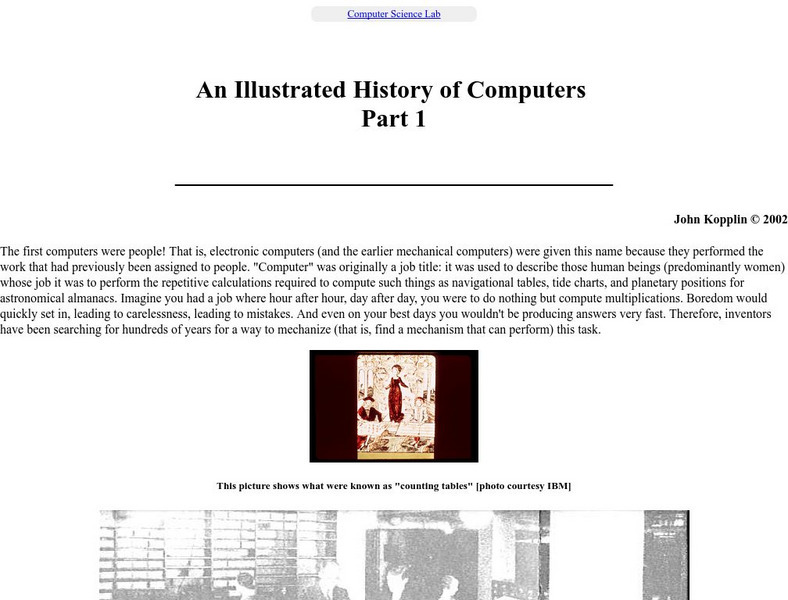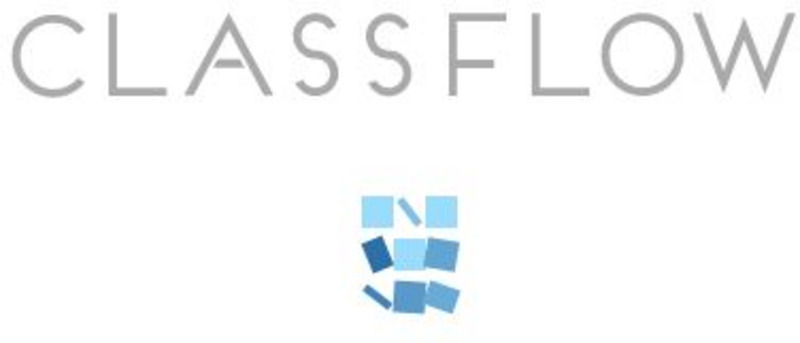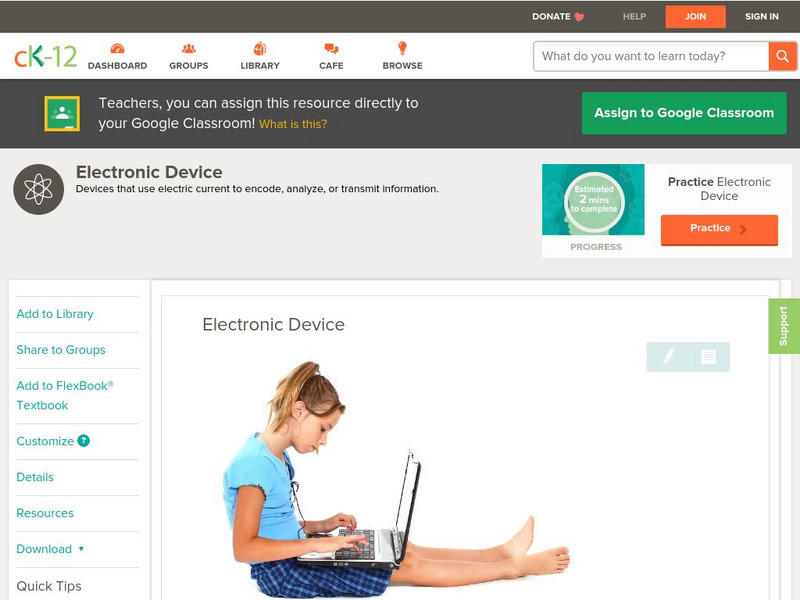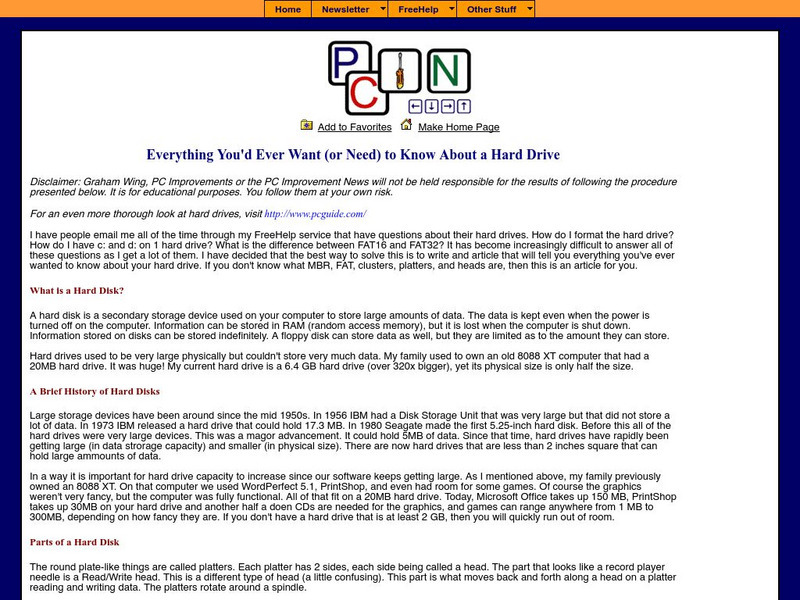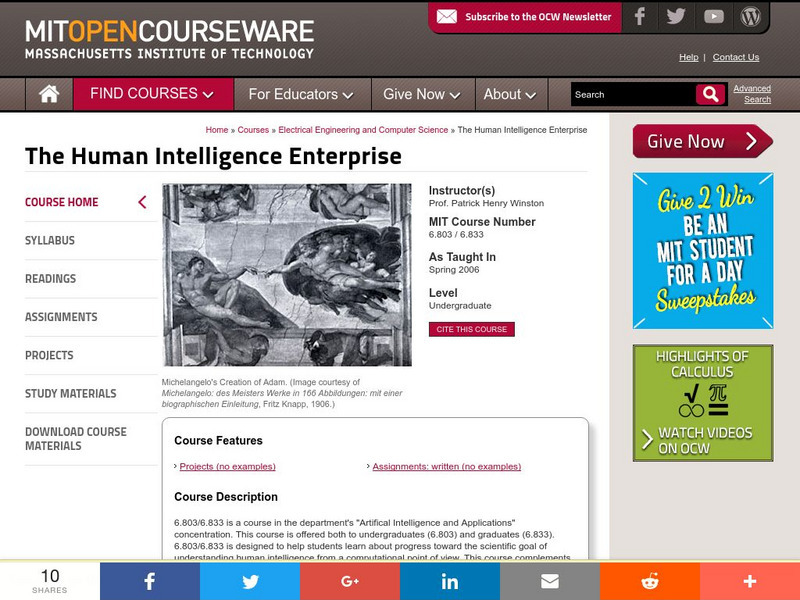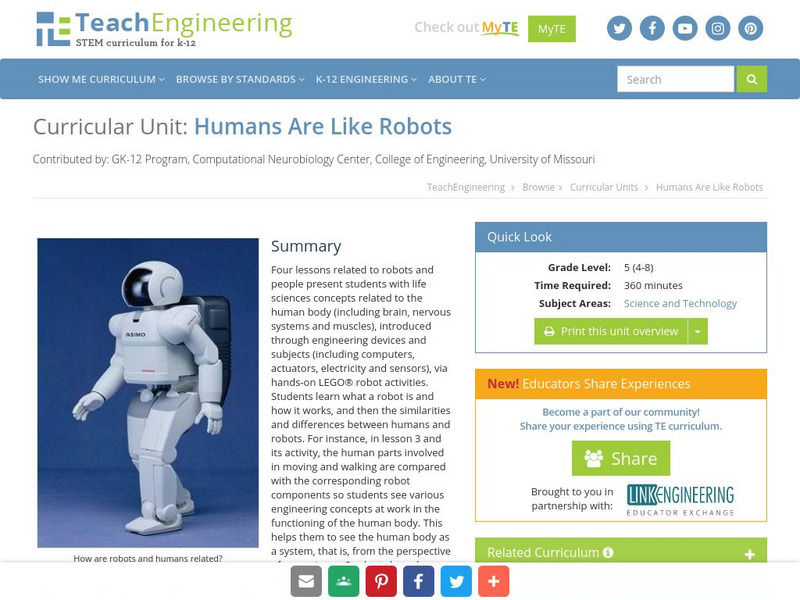Hi, what do you want to do?
Goodwill
Gcf Global: Computer Basics: Basic Parts of a Computer
Learn about the basic parts of a desktop computer.
Khan Academy
Khan Academy: Ap Computer Science Principles
A basic introductory course to computer science. Covers what computers are, their parts, and what they do; what the Internet is and how it works; some basic programming concepts; algorithms; data analysis; and global impact of computers...
Other
Beanz: How to Build a Computer
Building your own computer is a great way to not only save money, and get more processing power, but also to learn about the less obvious parts of software programming.
Khan Academy
Khan Academy: What Are the Parts of a Computer?
Each computer receives input from a variety of devices, processes that data with the CPU and memory, and sends results to some form of output. This diagram visualizes that flow.
Goodwill
Gcf Global: Computer Basics: Inside a Computer
Master some of the basic terminology and understand what goes on inside a computer.
ClassFlow
Class Flow: Parts of the Computer
[Free Registration/Login Required] This flipchart provides an introduction to computers at the elementary grade level.
Other
An Illustrated History of Computers Part 1
This site describes the history of computer innovations beginning with early mechanical devices to the electronic devices of the 20th century.
Khan Academy
Khan Academy: Computer Components
Check your understanding of the flow inside the computer, from the input to the CPU and memory and back to the output, in this set of practice questions designed for AP Computer Science Principles students.
Code.org
Code Studio: Computer Programming: Course E
Start coding with algorithms, loops, conditionals, and events and then you'll move on functions. In the second part of this course, design and create a capstone project you can share with your friends and family.
Code.org
Code Studio: Computer Programming: Course F
Learn to use different kinds of loops, events, functions, and conditionals. Investigate different problem-solving techniques and discuss societal impacts of computing and the internet. In the second part of this course, design and create...
Computer Hope
Computer Hope: Computer Dictionary
The dictionary is part of a site that offers free online help to computer users. The index provides a complete listing of terms by first letter. For terms that begin with a number, select the # sign.
ClassFlow
Class Flow: Computer
[Free Registration/Login Required] This flipchart helps students identify the parts of a computer in order to understand basic terms and terminology used in technology integration.
Other
Robotc: Thinking About Programming: Programmer & Machine [Pdf]
In this lesson, students learn about the roles of the programmer and the robot, and how the two need to work together in order to accomplish their goal. Students also understand logic behind the robot's actions, and break a big plan down...
Massachusetts Institute of Technology
Mit: Open Course Ware: Principles of Computer System Design: An Introduction
This site makes available the second part of a textbook on computer system design. The chapters cover topics such as fault tolerance, networking, consistency and information security.
Computer History Museum
Computer History Museum: An Overview of the History of the Software Industry
The software industry is a major part of the world economy. This site traces the relatively short history of the software industry, from the 1950s through the 1980s.
CK-12 Foundation
Ck 12: Physical Science: Electronic Device
[Free Registration/Login may be required to access all resource tools.] Explains what an electronic device is and discusses the computer.
Other
Pcin: All About Hard Drives
An article on the topic of hard drives. Includes what a hard disk is, brief history, parts of a hard disk with illustration, speed, and size.
Massachusetts Institute of Technology
Mit: Open Course Ware: The Human Intelligence Enterprise
This course is part of the artificial intelligence studies at MIT. The course is designed to help students learn about the scientific goal of understanding human intelligence from a computational point of view.
TeachEngineering
Teach Engineering: Hearing: How Do Our Ears Work?
Students learn about the anatomy of the ear and how the ears work as a sound sensor. Ear anatomy parts and structures are explained in detail, as well as how sound is transmitted mechanically and then electrically through them to the...
TeachEngineering
Teach Engineering: Humans Are Like Robots
Four lessons related to robots and people present students with life sciences concepts related to the human body (including brain, nervous systems and muscles), introduced through engineering devices and subjects (including computers,...
TeachEngineering
Teach Engineering: Friction Force
Students use LEGO MINDSTORMS robotics to help conceptualize and understand the force of friction. Specifically, they observe how different surfaces in contact result in different frictional forces. A LEGO robot is constructed to pull a...
Khan Academy
Khan Academy: Input & Output Devices
Become familiar with the parts of the computer that we interact with daily: the input and output devices.
University of Cambridge
University of Cambridge: Nrich: Game Chocolate Bars
Use this game to practice finding how many of the chocolate bars (or parts) you will get when you share them with your friends at the party. If you don't figure it out correctly the computer will tell why.










